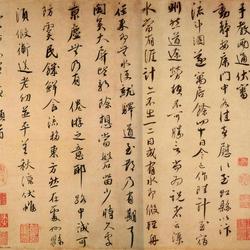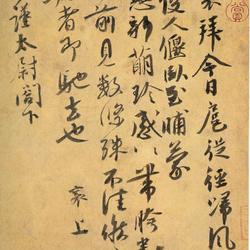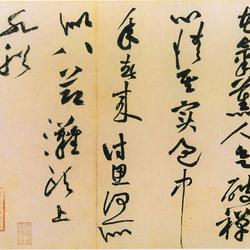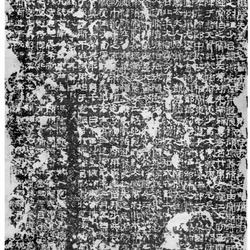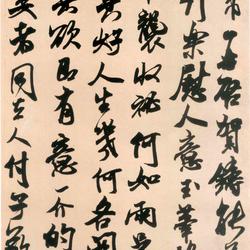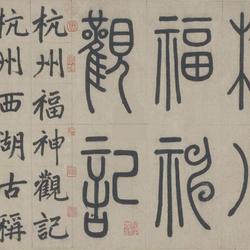
Mi Fu's "Hongxian Poems in Running Script" paper, 31.2 cm in length and 487 cm in width
Collection of Tokyo National Museum, Japan
Part of Mi Fu's "Hongxian Poems in Running Script"
This volume is two self-written seven-character poems written by Mi Fu when he was passing through the beautiful Hong County (now Sixian County, Anhui Province). The ink scroll on paper has thirty-seven lines in total, with two or three characters in each line. Very few of Mi Fu's large-character running scripts have been handed down from generation to generation, and this is his masterpiece of large-character writing in his last years, so it is very precious. Mi Fu often calls his books "brush characters", which is more obvious in his large characters. This post has a strong sense of rhythm and priority, and the use of ink is dry, wet, dark, and integrated, creating a natural appeal. For example, the eleven characters at the beginning of "Hong County's old title Yun Kuai Ji and one day Qing Shu" are completed in one go, and the pen is dry but does not fall apart. Behind the post is Liu Zhongyou's postscript from the 13th year of Dading in Jin Dynasty. The original work was shown in the "Sino-Japanese Calligraphy Treasures Exhibition" at the Shanghai Museum in 2006.
Explanation:
An old title from Hong County says.
The day is clear and graceful, and the sail is sailing thousands of miles with green elm wind. The boat is full of calligraphy and painting, and the moon is full of flowers. On the tenth day, the flowers are blooming.
Question again.
In the old tour of green elms and green willows, the old man with beautiful hair and pale face has retired. Angel is in charge of writing in his later years, and it is the family tradition of Shengzhi Elementary School. People are old again in Chang'an. When will we be able to return to the east? The title column Bianzhou is really old, and he has no career and wants to show off to his father-in-law.

